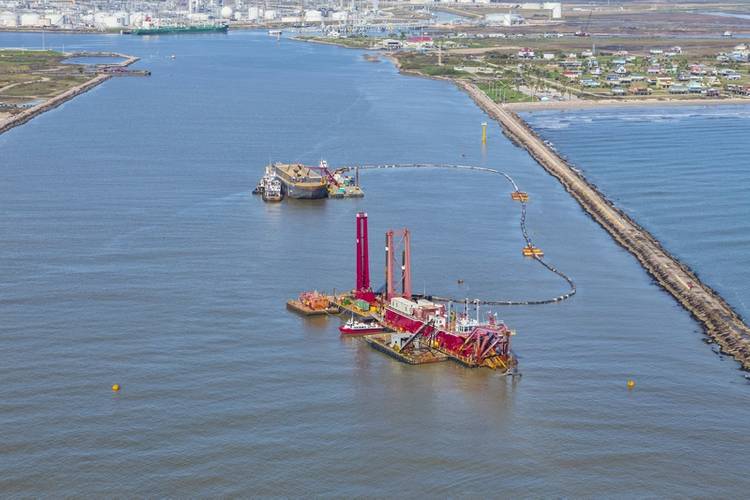The Importance of Deepening Port Channels
The strategic enhancement of port infrastructure through the deepening of external channels is a pivotal development in modern maritime operations. This initiative is primarily aimed at improving the operational capabilities and efficiency of ports, thereby significantly boosting their capacity to handle diverse cargo types, including containers, vehicles, general cargo, and bulk commodities, both mineral and vegetable. This article explores the importance of such upgrades, the typical timeline for these projects, and how they contribute to increasing a port’s cargo handling capacity.
Enhancing Port Accessibility
The deepening of port channels is crucial in accommodating larger vessels, such as Panamax and New Panamax ships, which are pivotal in international trade. These vessels require deeper water channels to navigate safely into and out of ports without the risk of grounding. By deepening the channels, ports can ensure safer and more efficient vessel movements, which is vital for reducing logistical bottlenecks and improving turnaround times.
Increasing Economic Viability
Ports with deeper channels can handle larger ships, which translates to more cargo being transferred per voyage. This efficiency not only boosts the port’s throughput but also enhances its economic viability. Economies of scale, achieved through handling larger loads, reduce transportation costs per unit, making products cheaper for consumers and more profitable for producers.
Environmental Considerations
Modern dredging techniques and environmental management practices play a crucial role in minimizing ecological impacts during channel deepening projects. These practices ensure the protection of marine life and habitats, making the deepening projects not only economically beneficial but also environmentally sustainable.
Project Timeline and Execution
Planning and Permits
Before the physical dredging begins, extensive planning and permitting processes are required, often involving environmental impact assessments, design and feasibility studies, and community consultations. This phase can take several months to a few years, depending on the project scale and the regulatory environment.
Dredging Process
The dredging process itself varies in duration based on the length and depth of the channel, the type of material to be dredged, and the technology used. On average, dredging projects can take anywhere from a few months to several years. For example, the Panama Canal expansion, a significant dredging project, took approximately nine years to complete, from planning to execution.
Post-Dredging Activities
After dredging, activities such as seabed leveling and environmental monitoring are conducted to ensure the channel meets navigational safety standards and to assess the environmental impact. These activities are crucial for the long-term success and sustainability of the dredging project.
Increasing Cargo Handling Capacity
Accommodating Larger Vessels
By allowing access to larger vessels, deepened channels directly increase a port’s capacity to handle more significant amounts of diverse cargoes. Larger ships can transport more containers and heavier bulk commodities, reducing the need for frequent trips and thus optimizing supply chain operations.
Diversifying Cargo Types
With deeper channels, ports can handle a wider variety of cargo types. This capability enables ports to diversify their operations and attract new business, from auto manufacturers needing to ship vehicles to producers and consumers of bulk commodities like coal, grains, and minerals.
Improving Turnaround Times
Enhanced channel depth contributes to improved safety and efficiency in vessel navigation, reducing the time ships spend waiting to dock and unload. Faster turnaround times increase a port’s overall throughput and capacity, making it a more attractive logistical hub.
Conclusion
The deepening of port external channels is a significant infrastructure upgrade that holds the potential to transform port operations dramatically. By accommodating larger vessels, such upgrades increase a port’s cargo handling capacity, enhance its economic viability, and promote environmental sustainability. The execution of such projects, while time-consuming and complex, is a strategic investment in the future of maritime trade and regional economic development. As global trade volumes continue to grow, the importance of these upgrades becomes increasingly evident, positioning deepened ports as critical nodes in the global logistics network.
